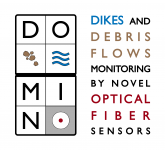Dikes are very common structures built along rivers and coastal areas for protecting the urban and rural developments in case of a flood event. They are most often built with anthropogenic and natural soils found near their location as their longitudinal nature makes them too expensive to be built in other, more resistant, materials. Hence, they are exposed to environmental deterioration processes which change their geomechanical properties. These processes are commonly referred to as “Dike Failure Mechanisms” and are one of the main concerns for dike designers and water managers.
There are over 20 main failure mechanism recognized in the field, of which Piping erosion, Macro-stability and Overtopping induced erosion (See video) are considered to be the most important as they can be rapidly triggered during a high water flooding event. These three failure mechanics are driven by either the pore water pressure increase inside the dike or are due to the head difference between the dry (land-side) and wet (river) side. Hereto, pore pressure measurement becomes viable to monitor the embankments. As failure locations and exact timing are not known a-priory, distributed pressure optical fiber sensors become a potentially excellent solution for this problem as it improves both spatial resolution and frequency monitoring, all in one sensing system.
